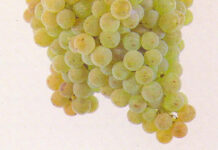Luke Richardson has worked in a range of venues across the UK, specialising in wine, and is now at Restaurant Dean Banks at The Pompadour in the Waldorf Astoria Edinburgh. In his column for SLTN he shares his thoughts on all things wine-related and answers your questions about wine. If you have a question for Luke email it to sltn@peeblesmedia.com

Hello again all!
After talking about dessert wines last time, I briefly touched upon Port wines, but only in passing. I thought I would take some time to look at the different styles available, and opportunities in which to sell them.
All Port wines in fact come from the Douro Valley, some 50 miles inland from the port of Oporto, but as they were shipped from here, the name has stuck.
Originally merited for its ability to last long enough to be transported by sea due to its fortification with brandy, it became hugely popular at the turn of the 18th century when Britain was warring with France, and imposed huge tariffs on French wine.
By the mid 1750s, Port was even separated into classed growths of varying quality, overseen by the Portuguese government – nearly a hundred years before Bordeaux!
Luckily for us, Port has continued to improve in quality up to the modern day.
Stylistically, the large majority of Port production is Ruby Port – young wine, aged around three years in barrels before bottling. It is mostly used in conjunction with something else – mix it with a brandy at Christmas, pour a shot into your favourite Irish stout, or glug it into your game gravy. Prices start at around £8+VAT.
LBV (Late Bottled Vintage) is probably the next quality up – these are wines from declared vintages that are aged in wood for six years, then bottled. Richer, riper, more fine tannins that are less harsh – this is the classic Christmas afternoon Port. Very good with hard salty cheeses, dark chocolate or as a fairly easy upsell alongside coffee. Expect to pay around £12.50+VAT and up.
Tawny Ports are where the quality level really goes up – normally labelled 10, 20, 30 or even 40 years old, these wines are still a blend of different years, but come from only barrel-aged wines. They tend to be much lighter and elegant, much more nutty, with candied peel and hints of spice coming through on the tail – great with chocolate desserts or just on their own.
Prices vary wildly depending on the age and the producer, but I would recommend around 20 years old – and serve lightly chilled if possible.
The top level are the full-bodied Vintage Ports, the best of the best. These are only barrel-aged for two years normally, then bottle-aged for a good long time – as an example, wines from the 1980s are now recommended for drinking. Personally, I would steer clear of these, or only list them by the bottle, as the danger of incurring wastage by serving them by the glass would be too high.
All these styles aforementioned have been red Ports, made from one of the 30 (!) permitted grape varieties, but there are some white Ports too – normally made from Malvasia or Verdelho. These are more akin to a sweetened sherry or a madeira, but are making a small comeback – and are very good with a variety of cheeses. Expect to pay around £14+VAT and serve straight out of the fridge for these.
Until next time, happy Porting!



















